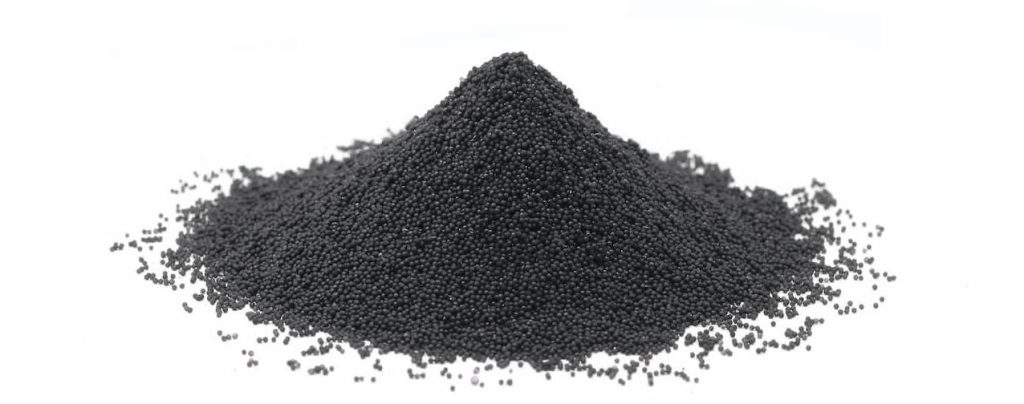Application fields of conductive carbon black

Conductive carbon black is a typical special carbon black with a conductivity generally in the range of 10-1~10-2S/cm. Conductive carbon black has the advantages of high electrical conductivity and thermal conductivity, low production cost, oxidation stability and low density, and has obvious advantages over metal powder or fiber fillers.
Battery field
Lithium-ion battery:
LiFePO4, LiNiO2, LiCoO2 and other positive electrode active materials are semiconductors or insulators with conductivity of only 10-9~10-3S/cm. Conductive additives need to be added to enhance their conductivity.
During the charge and discharge process, the negative electrode material will repeatedly expand and shrink due to Li+ insertion/extraction, which destroys the insertion channel of Li+ and reduces the discharge capacity.
Other batteries:
Nickel-hydrogen battery: Applied to the negative electrode, as an electron carrier and conductive additive, it helps the negative electrode material to better carry out electrochemical reactions, reduce electrode polarization, improve the battery’s charge and discharge performance and cycle life, and reduce side reactions such as gas generation.
Nickel-cadmium battery: Acts on the negative electrode to improve the conductivity of the negative electrode material, reduce the internal resistance of the battery, improve the large current discharge capacity and charge and discharge efficiency, and reduce energy loss and heat generation.
Rubber and plastic products field
Antistatic products:
Manufacturing antistatic rubber products, such as antistatic rubber sheets, antistatic conveyor belts, rubber soles, medical rubber products, etc., can effectively prevent the generation and accumulation of static electricity and avoid the harm of static electricity to equipment and personnel.
Production of conductive plastic products, such as conductive films, conductive fibers, conductive leather products, etc., has important applications in electronic packaging, electromagnetic shielding and other fields.
Ordinary rubber and plastic products: It can improve the conductivity of rubber and plastic, make them have certain antistatic properties, reduce the impact of static electricity on products, and improve the mechanical properties and processing properties of materials.
Cable material field
Power cable shielding material
Anti-electromagnetic interference: In power cables, conductive carbon black can be added to the shielding layer of the cable to effectively shield external electromagnetic interference and ensure that the power signal transmitted by the cable is stable and accurate.
Homogenized electric field distribution: During the operation of the cable, the uneven distribution of the internal electric field may cause problems such as partial discharge, affecting the service life and safety of the cable.
Semi-conductive cable materials
Semi-conductive shielding layer: Semi-conductive shielding layer used for medium and low voltage cables. Conductive carbon black can be mixed with base materials such as rubber or plastic to form a semi-conductive composite material.
Improving processing performance: The addition of conductive carbon black can improve the processing performance of cable materials, making them easier to extrude and shape, and improving production efficiency and product quality.
Electronic printing and coating industry
Conductive ink and conductive coating:
Adding conductive carbon black can make inks and coatings conductive, and they are used in printed circuit boards (PCBs), electronic displays, electromagnetic shielding coatings and other fields.
Electronic printing:
Conductive carbon black can be used to make anti-static clothing, smart textiles, etc. In some working environments that require anti-static, wearing anti-static clothing can avoid static electricity damage to electronic equipment and harm to the human body.
Other fields
Fuel cells: In polymer electrolyte fuel cells, conductive carbon black can be used in the fuel electrode and air electrode as an electron carrier and catalyst carrier to promote the electrochemical reaction between fuel (such as hydrogen) and oxidant (such as oxygen), and improve the power generation efficiency and performance of fuel cells.
Supercapacitors: Conductive carbon black can improve the conductivity and capacitance of supercapacitor electrodes, enabling them to quickly store and release charges, with higher energy density and power density.
Aerospace and military fields: Used to manufacture antistatic and electromagnetic shielding materials, such as aircraft shell coatings, missile shell materials, etc., to reduce the impact of static electricity on equipment and improve the stealth performance of equipment.
